
"I am now eighty-two years old. Recalling my sixty years of painting studies, I am old and forgetful, and cannot fully recall them. There were few days of joy and pleasure, of smooth brushstrokes. Most of the time, I was exploring and advancing, struggling and learning... Only the sweetness and bitterness of achieving success in an art can be known..." These words, written in 1990 by the renowned Chinese painter Lu Yanshao (1909-1993), serve as a self-portrait, outlining the hardships and perseverance of his artistic journey. Recently, "Achieving Success in an Art: A Comprehensive Exhibition of Lu Yanshao's Art," an exhibition titled "Achieving Success in an Art" is on display at the Lu Yanshao Art Academy, adjacent to the renowned Qiuxia Garden in Jiading. Yesterday, The Paper | Art Review visited the exhibition hall to gain a closer look at Lu Yanshao's art and life.
This exhibition is the largest in terms of the number of collections exhibited and the scale of the exhibition since the establishment of Lu Yanshao Art Academy. It not only jointly presents the Lu Yanshao Art Academy's treasures "Mao Zedong's Poems" and "Three Gorges Map", but also uses Lu Yanshao's hometown of Jiading as a clue to specially present a series of works related to Jiading.

Lu Yanshao once said, "The sweetness and bitterness of mastering an art are known only to oneself, and there are things one cannot possibly share with others." This statement becomes the theme and soul of this exhibition. Drawing on the Academy's years of collection and research, the exhibition presents the first large-scale, systematic exhibition of over 100 works by Lu Yanshao, including landscapes, poetry, calligraphy, and precious manuscripts and documents.
Just as he described it - "crossing rapids, rushing like an arrow, rowing and paddling, working hard and making every effort", his artistic path has never been smooth, but it has always moved forward.

Biography of Lu Yanshao (1990)
Son of Jiading: Hometown Feelings Deep in His Writings
Lu Yanshao (1909-1993), also known as Di and styled Wanruo, was a native of Nanxiang Town, Jiading District, Shanghai. A lover of painting since childhood, he studied classical Chinese poetry and painting with Wang Tongyu (a former Qing Dynasty imperial scholar) in his early years. He later began his formal training under the tutelage of the renowned Shanghai School artist Feng Chaoran. He remained content with a simple life, unconcerned with fame and fortune. Whether navigating war, displacement, or exile with his family, or experiencing political turmoil, he never gave up his unwavering pursuit of art, his spirit of "martyrdom" for his art permeating his life.
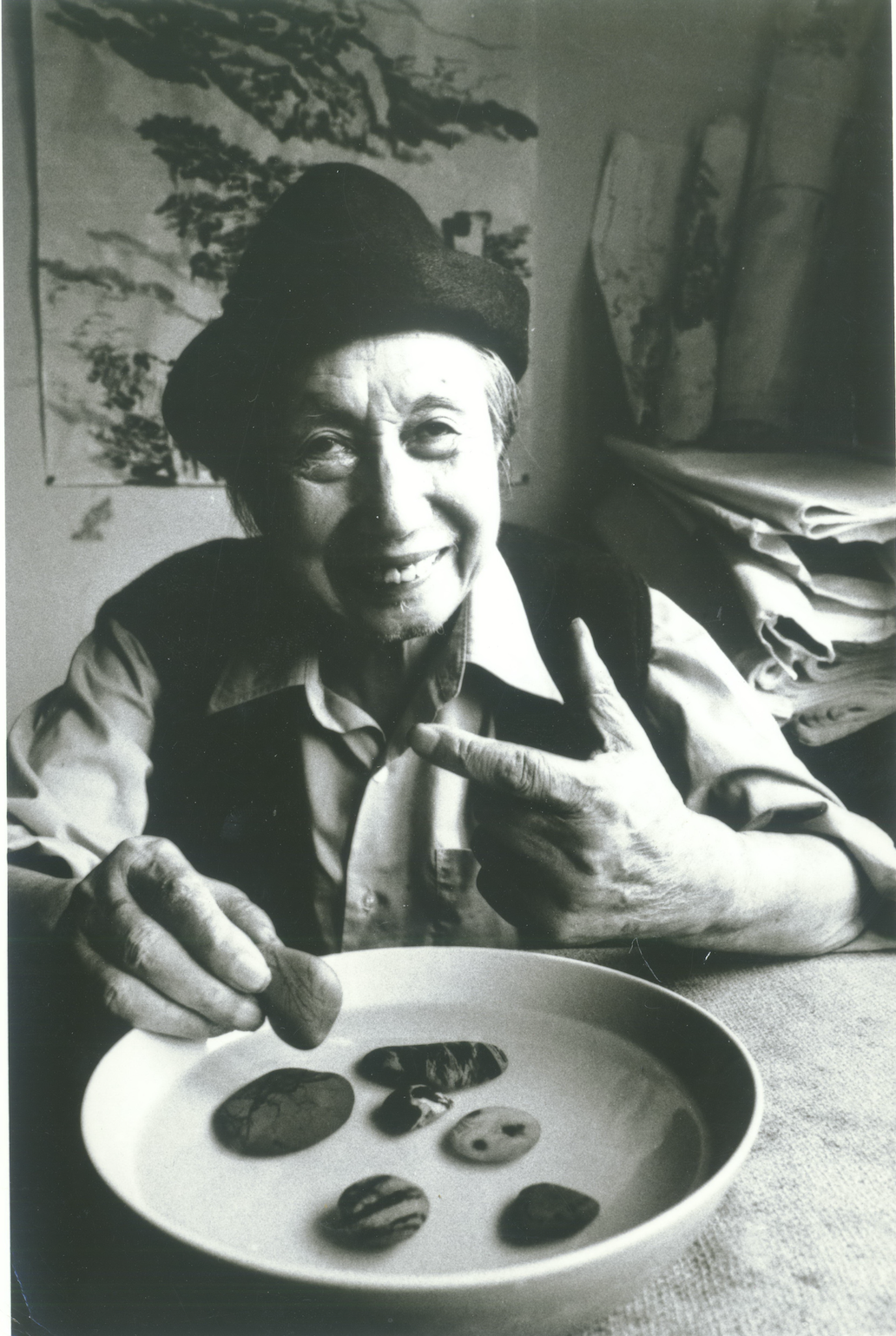
Lu Yanshao
He began with the "Four Wangs" and pursued the works of the Song and Yuan dynasties. He also took nature as his teacher, traveling extensively to renowned mountains and rivers. He spent eight years in Sichuan during the Anti-Japanese War, and later traveled to Xin'an, Jinggang, and Yandang. This fusion of mind and nature infused his brushwork with new elements and the spirit of the times, ultimately creating the world-renowned "Lu Family Landscape." In the early 1980s, Lu Yanshao was the first among art colleges nationwide to recruit graduate students in landscape painting, cultivating a group of highly skilled professionals and establishing a comprehensive and scientific landscape painting education system. Lu Yanshao served as a representative of the Sixth and Seventh National People's Congresses, President of the Zhejiang Academy of Painting, member of the Chinese Painting Academy, director of the China Artists Association, painter at the Shanghai Chinese Painting Academy, and professor at the Zhejiang Academy of Fine Arts.
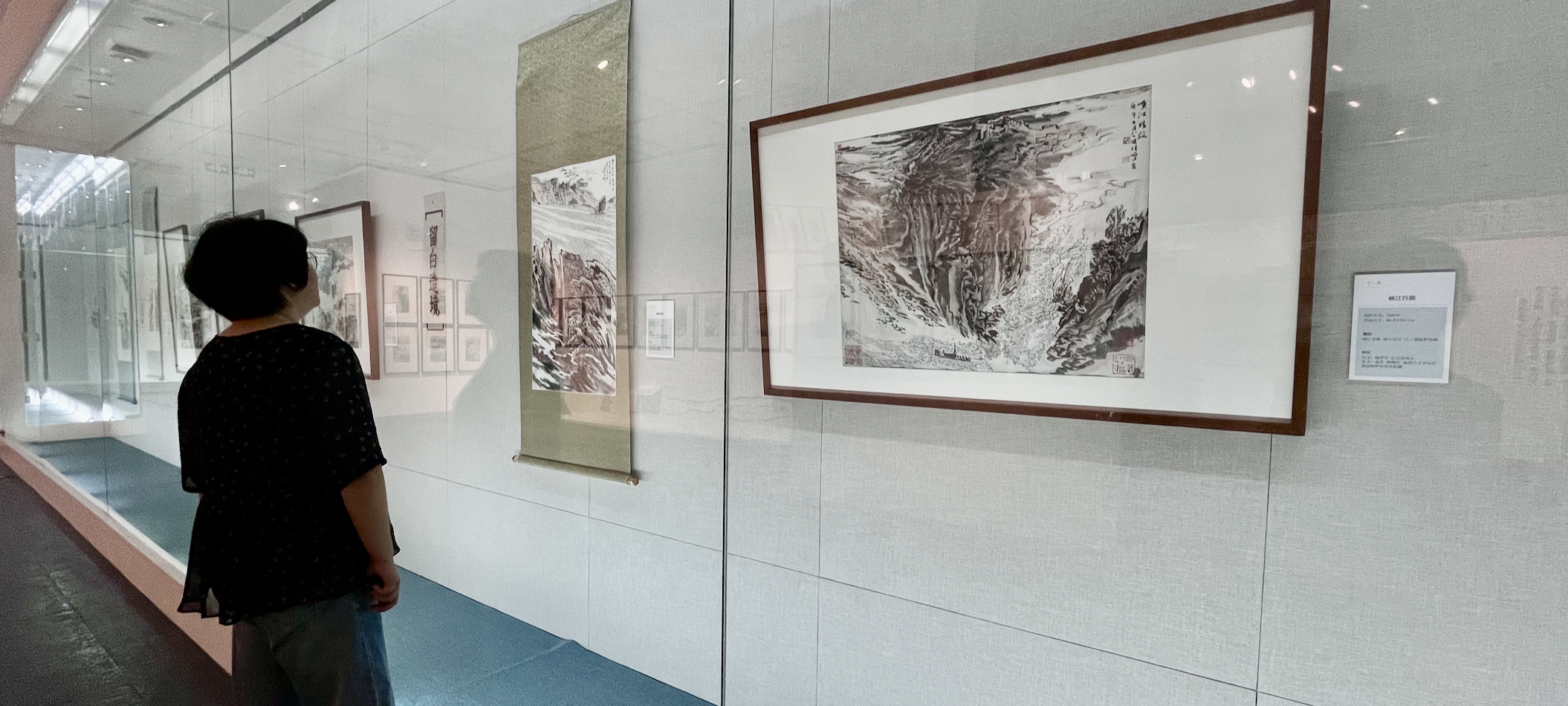
Exhibition site
It is worth mentioning that this exhibition is the largest in terms of the number of collections exhibited and the scale of the exhibition since the establishment of the Academy of Art. It not only jointly presents the museum's treasures "Mao Zedong's Ci Yi" and "Three Gorges Map", but also uses Lu Yanshao's hometown of Jiading as a clue to specially present a series of works related to Jiading, such as the poetry and prose manuscripts "Six Scenes of Lianchuan", "Autumn Clouds and Bright Lights", "Poetry and Prose Manuscripts of King Huai and Tongyu" and other precious documents, showing the artist's deep love for his hometown.

Manuscript of Poems and Essays by King Huai and Tong Yu
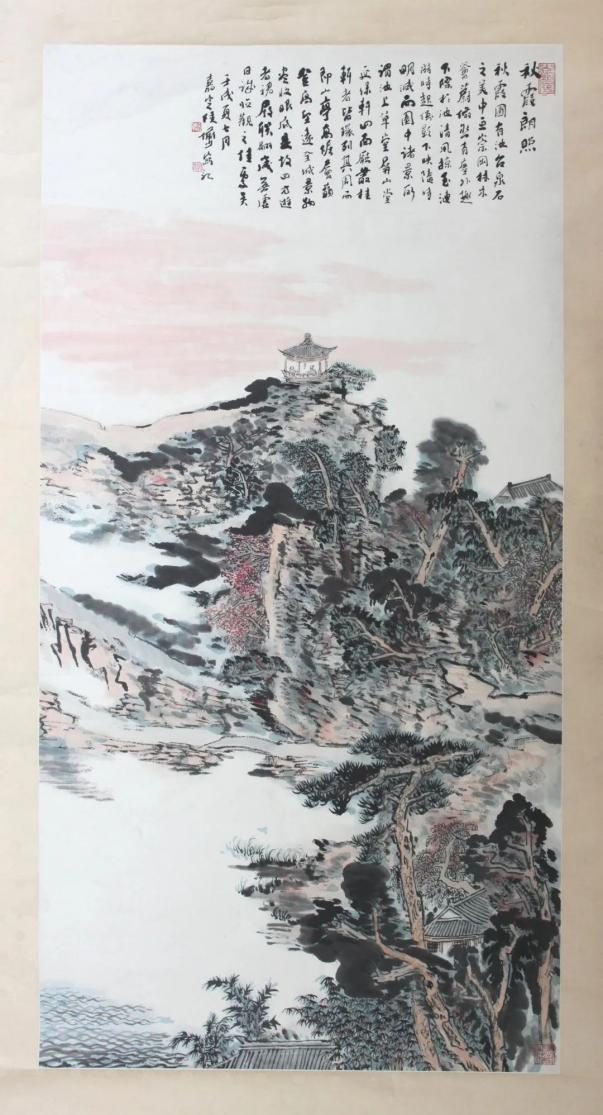
Bright Autumn Clouds
The Lu Yanshao Art Museum is adjacent to the Jiading Qiuxia Garden. "Autumn Glows and Bright Lights," set in the famous Qiuxia Garden in Jiading, is not only a landscape painting but also a visual letter to one's hometown. The inscription details the garden's pavilions and waterscapes, with phrases like "From a high vantage point, the entire city is in sight" and "Ripples rise, reflections flicker." The brushstrokes depict the undulating hills and lush forests, while the light ink, leaving white space, creates a hazy shimmer in the pond, blending the garden's secluded charm with the sentimentality of one's hometown.

Manuscript of the poem "Six Scenes of Lianchuan"
The manuscript of "Six Scenes of Lianchuan" focuses directly on the scenery of Jiading. "Lianchuan" is another name for Jiading, and the six scenes are representative of the city's landscapes, reflecting both the poetic and the calligraphic masterpieces.
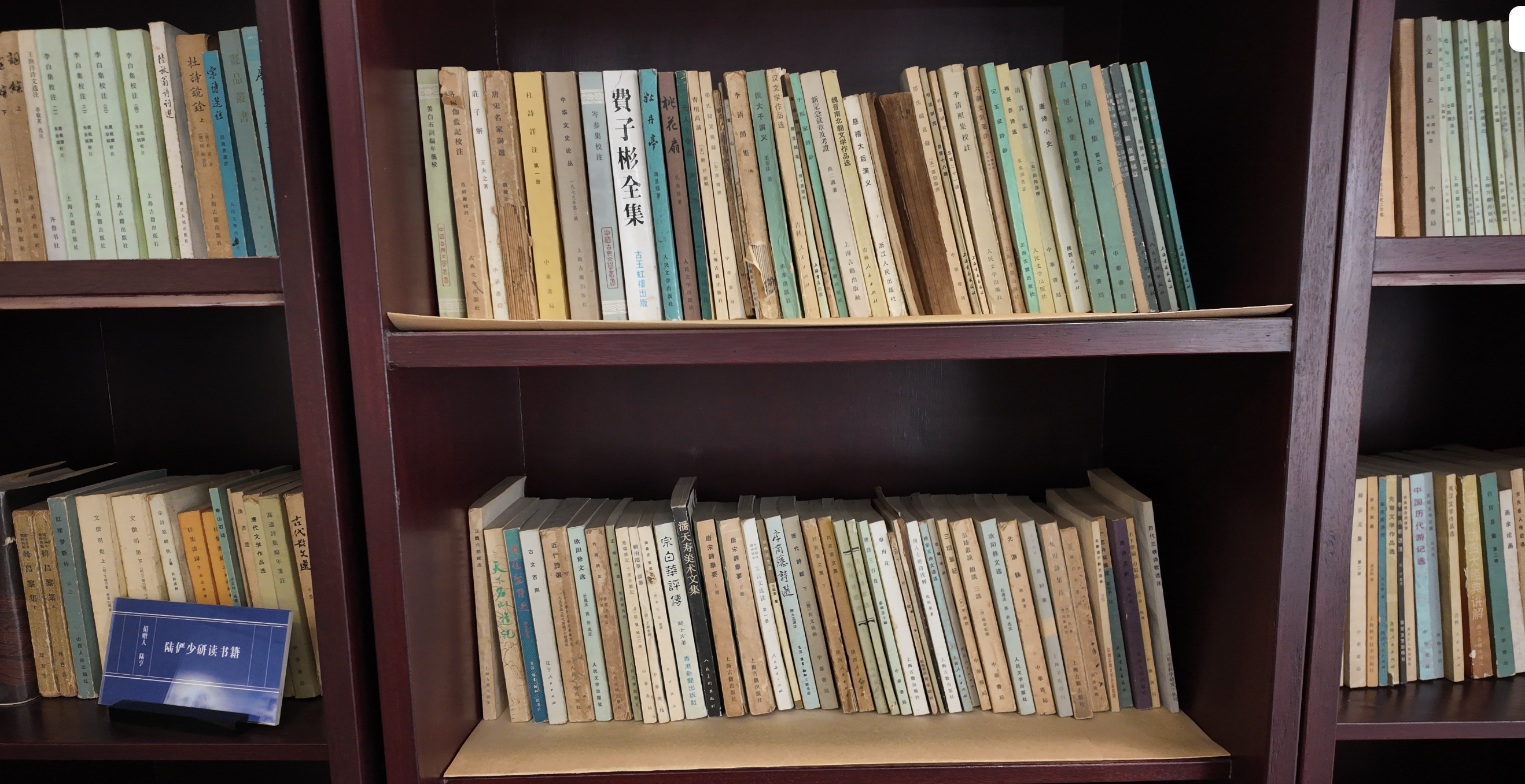
Lu Yanshao's bookshelf arranged in the exhibition hall
Lu Yanshao famously proposed the concept of "ten points of effort": four points reading, three points writing, and three points painting. In 1930, at the age of 22, Lu Yanshao was self-taught at home, making progress in poetry, calligraphy, and painting. "Four points of effort" accounted for the highest percentage and ranked first, demonstrating the importance of reading. A deep understanding of classical culture is essential for the study of painting. "Effort lies outside the painting," with reading and writing accounting for seven points, aligning with the premise of Chinese literati painting. This theory not only served as Lu Yanshao's long-term goal for his own painting career, but also provided a sound path for future generations of painters to elevate their artistic attainments.
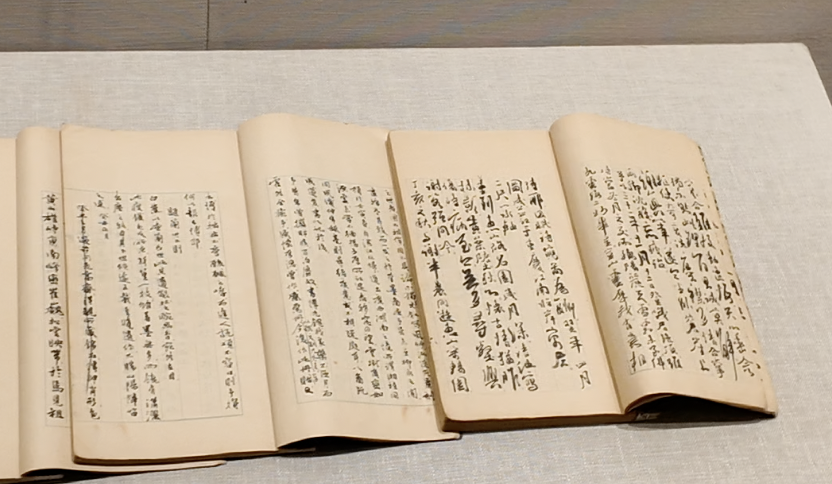
Manuscript of Miscellaneous Paintings
Comprising seven volumes, the manuscript collection "Miscellaneous Notes on Paintings" is a collection of Lu Yanshao's poems, essays, and artistic reflections, compiled personally from the early 1940s to the late 1980s. According to Li Wenling, Head of the Collections Department at the Lu Yanshao Research Department, "The first volume was transcribed by Lu Yanshao himself, and the next six volumes were copied by his disciples." The manuscripts are closely intertwined with his artistic style, capturing his thoughts on paintings like "Autumn Glows in the Bright Sun" and his observations of the mountains and rivers like "Travels in Nanyan Dang," while embodying a sense of calm and exhilaration. The poems and essays, embodying both literary sentiment and historical value, fully chart his artistic journey from learning from the ancients to his breakthrough, serving as firsthand material for studying his philosophy of "integrating literature into painting."
Lu Yanshao believed in "comprehensive effort," emphasizing that reading, calligraphy, and painting should all be equally important. "It's best not to specialize in just one type of painting. Landscape painters should also explore figures, flowers, and birds. We often see landscape painters occasionally painting flowers, breaking away from the traditional flower painter's mold and creating their own unique and interesting works."

Luoshen Picture
Mr. Lu advocated this and also practiced it. Before the 1950s, Mr. Lu Yanshao produced relatively few figure paintings, primarily focusing on landscapes with more figures as background. His figure paintings during this period were significantly influenced by his teacher, Feng Chaoran. Feng Chaoran was also a versatile painter, skilled in figures, landscapes, flowers, and birds. His figure paintings were primarily influenced by the styles of Gai Qi and Fei Danxu, and further traced back to Tang Yin and Qiu Ying. His figure paintings are characterized by elegant lines, traditional Ming and Qing dynasty figures, and beautiful colors. Judging from the stylistic characteristics of "The Goddess of Luo River," it is likely that he primarily inherited Feng Chaoran's style.
From "Painting Heart Foundation" to "Old Age Reform"
The exhibition's "Painting Heart and Laying the Foundation" section delves into Lu Yanshao's philosophy of "ten-point effort." He studied classical Chinese literature with Wang Tongyu, a former Qing Dynasty Hanlin, and painting under Feng Chaoran. He built his foundation on the works of the "Four Wangs," tracing his roots to the Song and Yuan dynasties, integrating the subtle elegance of Huang Gongwang and the majestic grandeur of Guo Xi, yet never confined by school of thought.
This section is divided into two parts: "Yan Shao's Poetic Rhythm" and "Learning from the Ancients Without Being Confined to the Past." The former highlights Lu Yan Shao's poetic and literary accomplishments, such as the seven volumes of his "Miscellaneous Paintings," a core document for studying his philosophy of "incorporating prose into painting." The latter focuses on "A Hundred Volumes of Du Fu's Poetic Inspiration" (a picture album), a classic example of Lu Yan Shao's learning from the ancients while creating something new.

Du Fu as depicted by Lu Yanshao, "Poetic Images of Du Fu, Volume 51"
This painting, "Poems of Du Fu, Album 51, One Hundred Pictures," was created in 1962. The small figure in the painting is Du Fu, with the inscription in the lower right corner: "Looking up greedily to watch the birds, turning back to answer the wrong person" ("Looking up greedily to watch the birds in the sky, hearing their call, turning back to answer, only to realize he has mistakenly addressed the person). In the second year of the Shangyuan period (761), Du Fu resided in the Thatched Cottage in Chengdu. Having previously experienced a long period of displacement and social unrest, he found temporary refuge and penned two poems.
The inscription on the right side of this painting details the creation of "One Hundred Leaves of Du Fu's Poetry." This album comprises 100 paintings, each measuring 43.5 x 27.5 cm. The landscapes depicted in the album were created by Lu Yanshao based on his own interpretations of Du Fu's poetry, and each painting is accompanied by Du Fu's poetry.
In 1962, to commemorate the 1,250th anniversary of Du Fu's birth, Lu Yanshao prepared to paint a 40-panel album of Du Fu's poems. Discussing this idea with Wu Hufan, Lu Yanshao was encouraged to "make it 100." He said, "This is unprecedented in the history of painting. Tang Liuru created an album of 100 panels, but it wasn't entirely landscapes. Hua Xinluo also created an album of 100 panels, also combining landscapes, figures, birds, animals, flowers, fish, and insects. Each panel in the album must be varied, and the brushwork, style, and coloring must be unique to avoid tiring the viewer and to ensure each panel remains fresh and captivating." To create an album entirely of landscapes, the artist must master a variety of brushstrokes and techniques—a significant feat. Encouraged by Wu Hufan, Lu Yanshao began painting, first completing 25 panels inscribed in regular script, and then completing another 100 panels inscribed in official script.
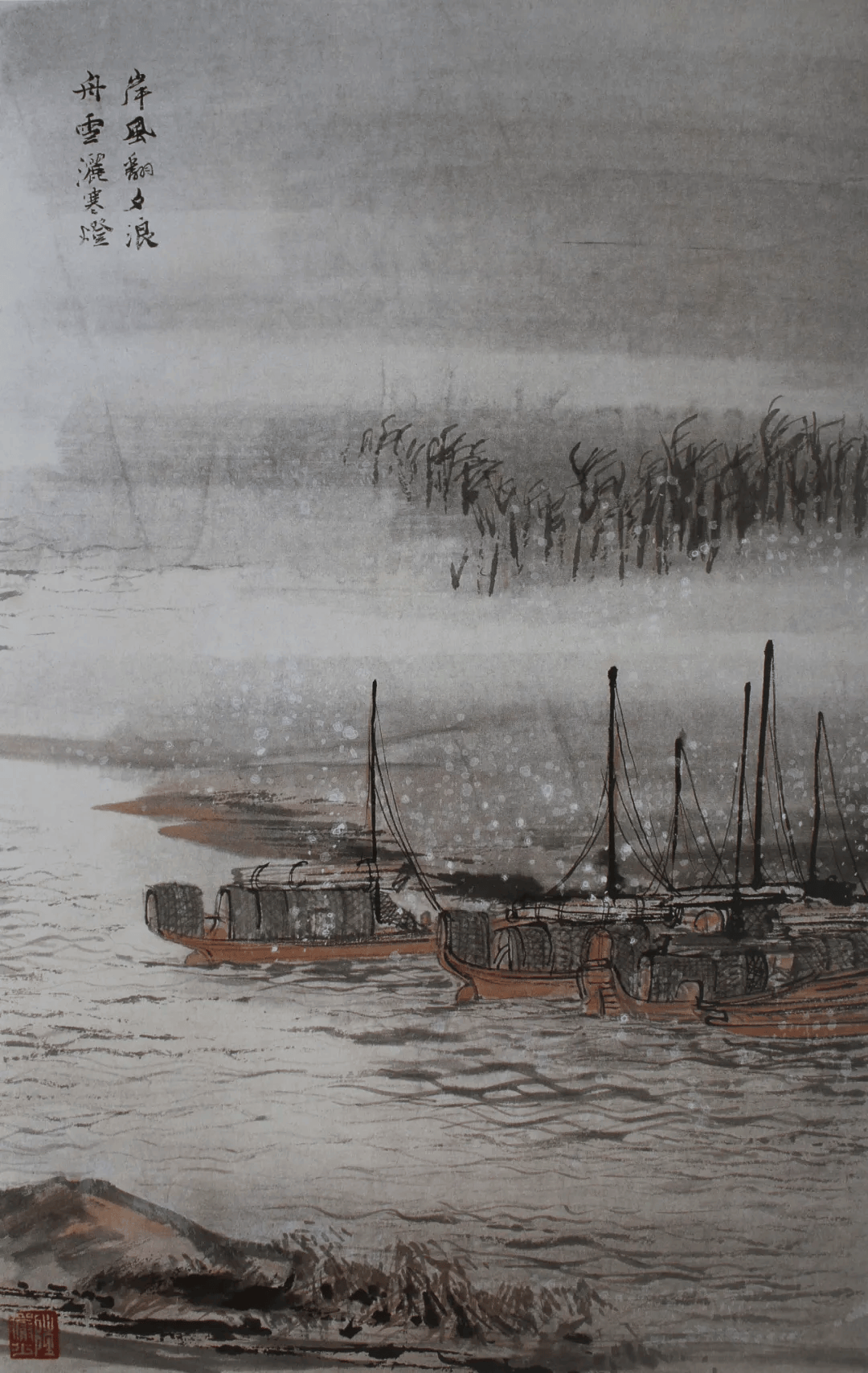
"One Hundred Leaves of Paintings Inspired by Du Fu's Poems": Shore breeze stirs evening waves, snow on boat casts cold light
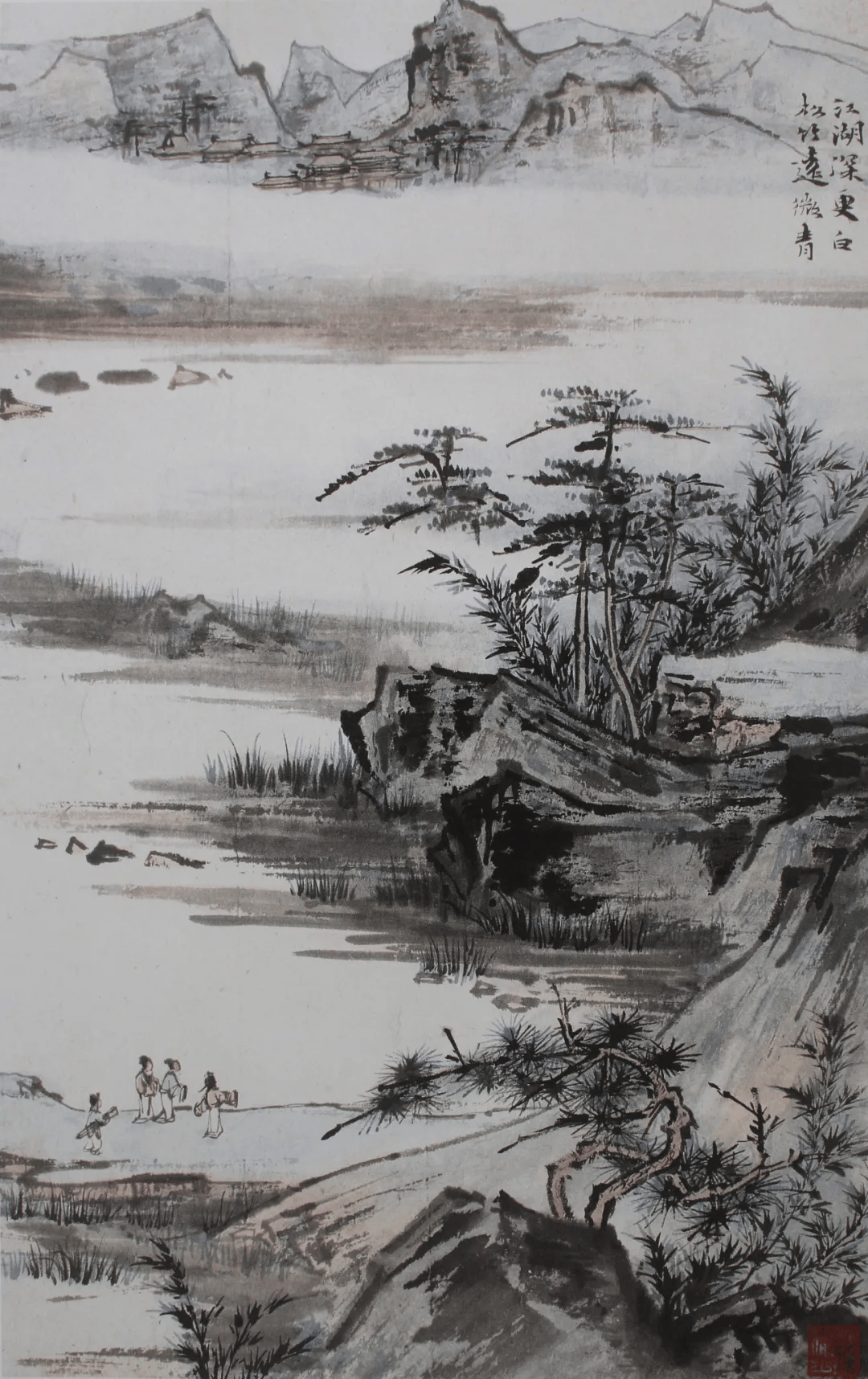
"One Hundred Leaves of Paintings Inspired by Du Fu's Poems": The Rivers and Lakes Are Deep, the Whitest, the Pines and Bamboos Are Far Away, Greener
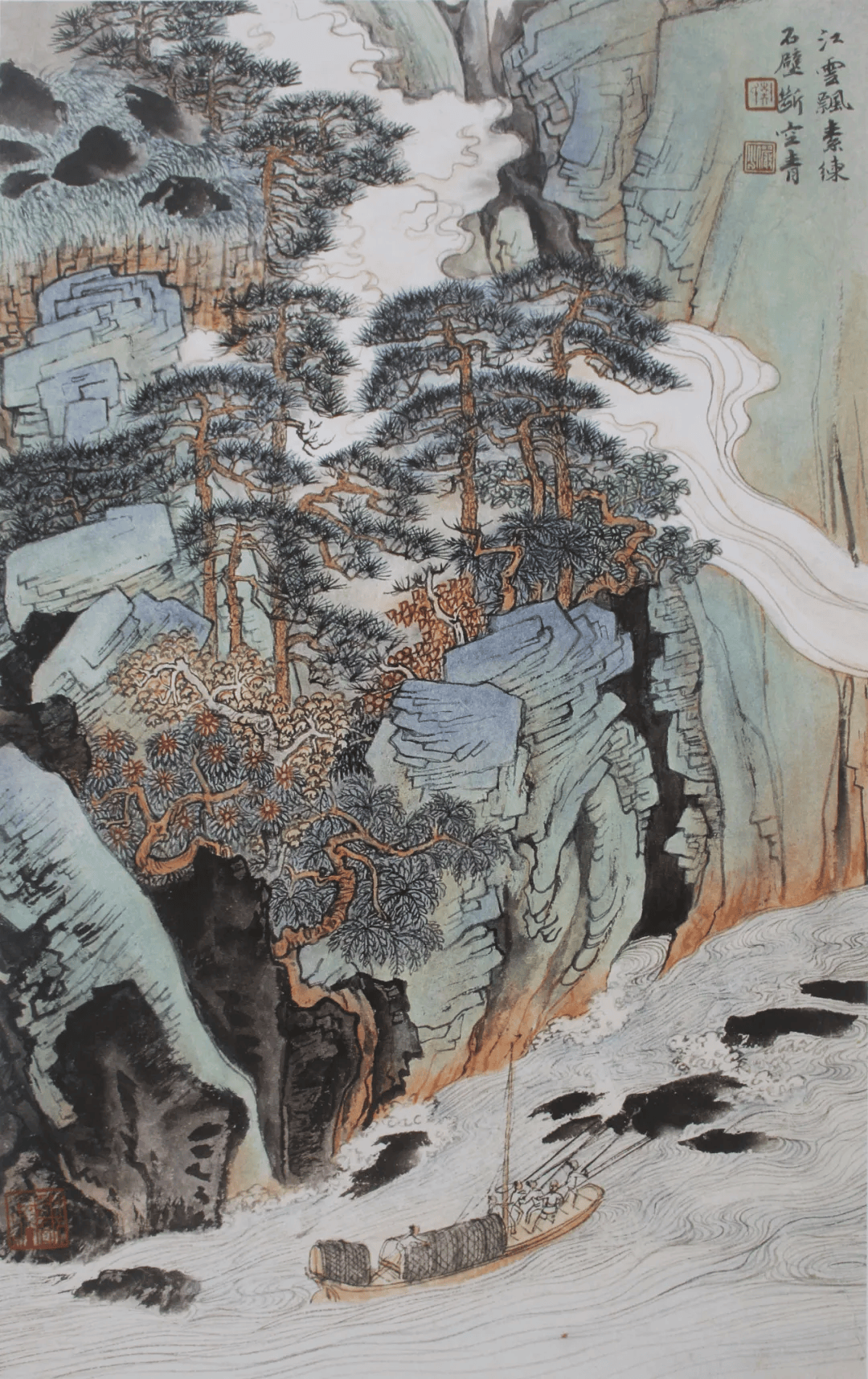
"One Hundred Leaves of Paintings Inspired by Du Fu's Poetry": River clouds drift like white silk, stone walls cut through the empty blue sky
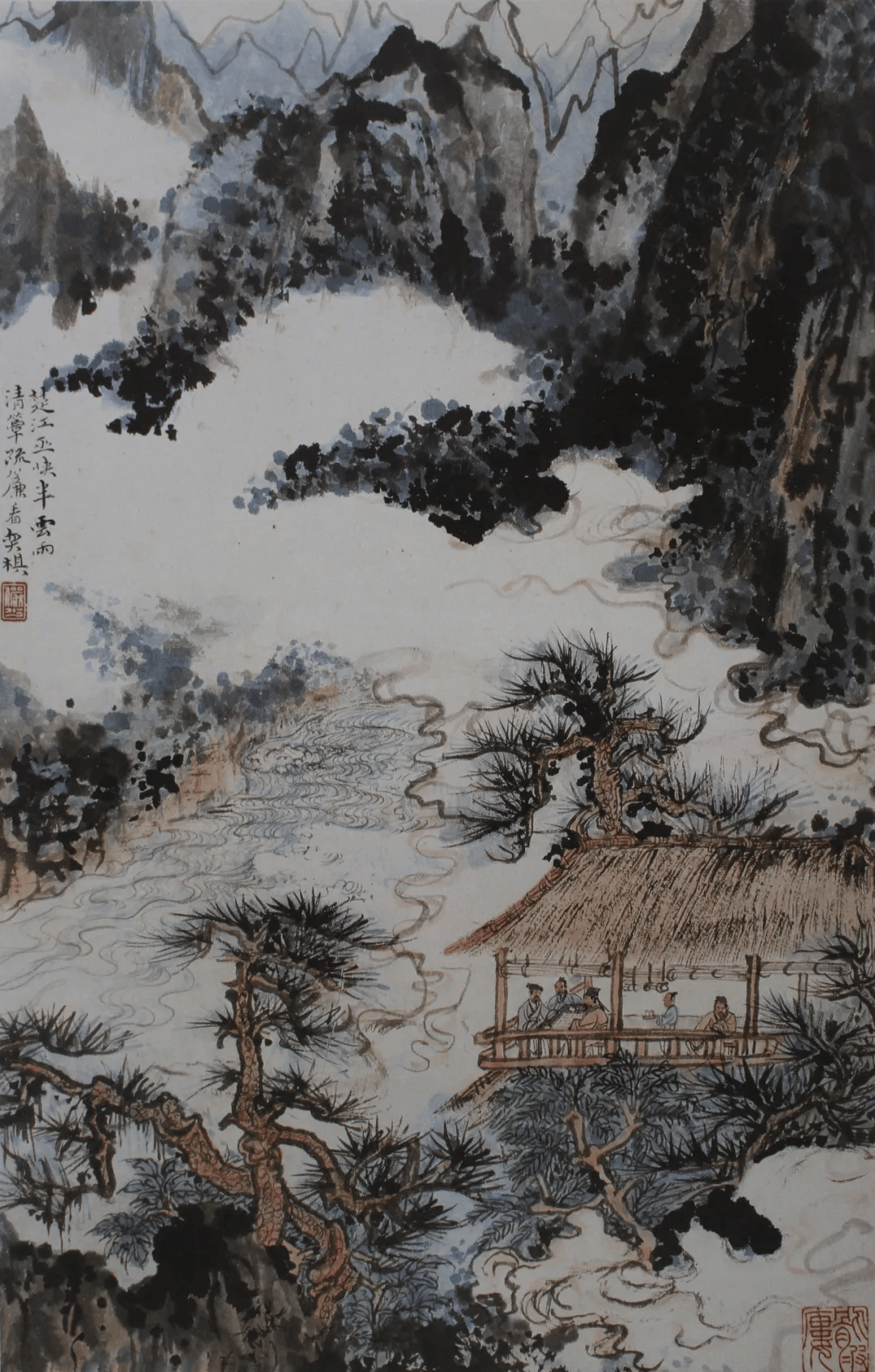
"One Hundred Paintings Inspired by Du Fu's Poems": The Chu River and Wu Gorge are half covered with clouds and rain, and I watch chess players behind a mat and draped curtains.
Notably, Zhejiang Renmei Publishing House recently published "One Hundred Du Fu Poetry and Painting Album Leaves," which comprehensively presents the details of 100 paintings and poems. "The card-style album is easy to browse, and the 100 works, each inscribed with Du Fu's poems, are diverse in style, making them a great aid for painting enthusiasts to learn and copy." According to Gu Jing'an, director of the Lu Yanshao Art Academy, Lu Yanshao's "One Hundred Du Fu Poetry and Painting Album Leaves" sold for a staggering 69.3 million yuan at the Beijing Hanhai Spring Auction in 2004, setting a record for the highest auction price for Chinese calligraphy and painting, both ancient and modern, at the time.

At the exhibition site, on the left is the authentic work of Du Fu's poetic picture series, which is the key collection.
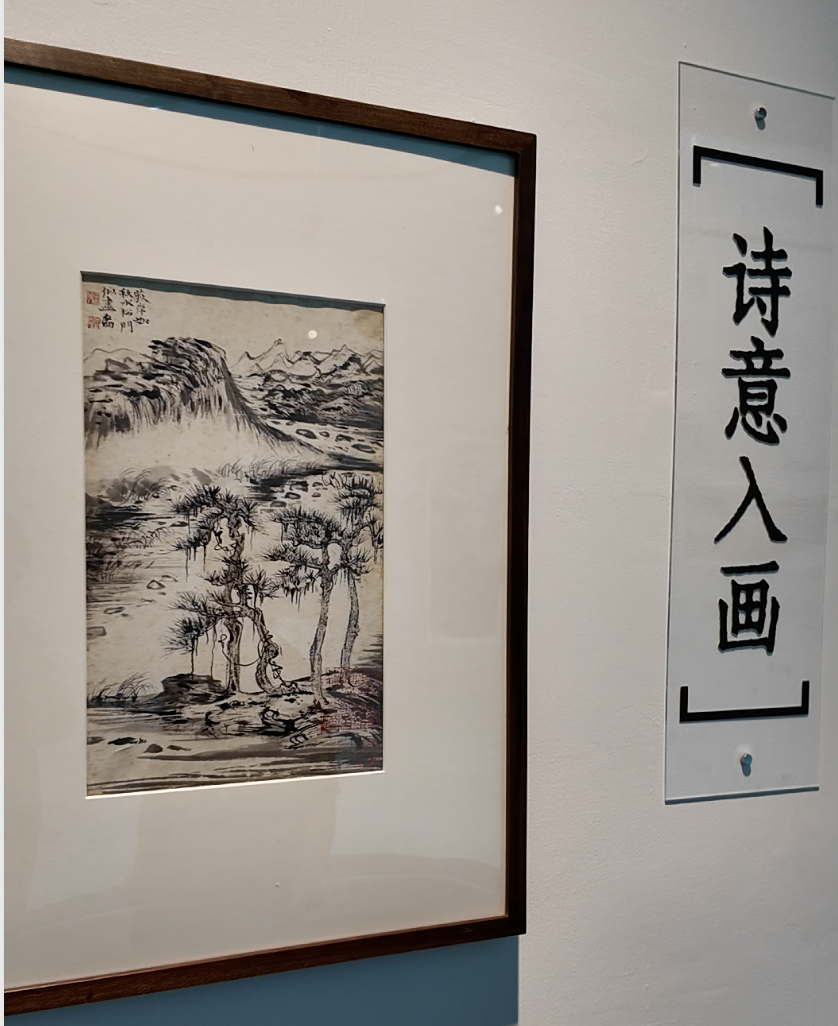
At the exhibition, one of the authentic paintings of Du Fu's poems was painted later.
The 30 authentic paintings of Du Fu's poems on display on the first floor of the exhibition hall are the museum's treasures. They were created by Lu Yanshao after he completed a 100-page album, feeling it was not good enough, and he repainted it. Lu Yanshao once said, "A landscape painter must delve deeply into famous mountains and rivers, observing the spiritual aspects of nature, broadening his horizons, enhancing his perceptions, elevating his artistic conception, and enriching his techniques." He believed that a painter's success ultimately lies in establishing his own style, but that not all works with a style are good. "A work with a well-developed style can withstand the reader's contemplation and scrutiny, leaving them lingering in their minds, unable to be forgotten, and wanting more and more. It possesses an extraordinary artistic charm, something not often achieved."
Gorges and rivers, a reflection of the times
"Three Gorges" (1987) is the culmination of Lu Yanshao's work on the gorges and rivers in his later years. Measuring 3.5 meters in length, it depicts the surging river and intertwined clouds and mountains in a horizontal scroll composition. His experience of traveling by raft from Sichuan in 1946 and experiencing the treacherous rapids of the Three Gorges became the inspiration for his subsequent work.

Three Gorges Map
Lu Yanshao, along with Li Keran, is often called "Li of the North and Lu of the South." One of his most celebrated artistic achievements is his depiction of the treacherous waters of gorges and rivers, a feat he honed in on himself.
After the victory of the Anti-Japanese War in 1945, Lu Yanshao, who had been living in Chongqing, was eager to return to his hometown of Shanghai. At the time, with so many eager to return eastward, transportation was extremely limited. Airplane and ship tickets were not only expensive but also extremely difficult to obtain. Lu Yanshao's family of nine was financially strapped. Finally, at the recommendation of a friend, they chose a primitive and risky method: a trip down the river on a timber raft (also known as a bamboo raft). This decision, driven by an urgent need to return home, also inadvertently led to an artistic rebirth. The Three Gorges section of the Yangtze River is riddled with reefs, turbulent currents, and numerous treacherous rapids. It is said that during their journey, they were even followed by a pirate ship, and passengers on other boats in the same area were robbed of their belongings. Lu Yanshao and his family had to seal their money in glass bottles and hide them on the underwater raft to avoid disaster.

Gorge and Haze
The raft Lu Yanshao and his family took was constructed from over a hundred large logs bound together, with two wooden sheds built atop it to house the raftsmen, Lu Yanshao's family, and the accompanying Jiangsu painter Peng Ximing. The journey lasted over a month, and he viewed this adventure as a once-in-a-lifetime opportunity to observe nature and learn from its influence.

Journey of Pen and Ink

Portrait of the Hu Monk Cen Shen and Taibai
This unique experience left a deep imprint on Lu Yanshao's artistic life, spurring a shift in his style. Inventing the "Lu-style Clouds and Water," he abandoned simple imitation and, drawing on his profound understanding of the natural dynamics of water, developed a method primarily based on outlines to depict clouds and water. He excelled at depicting surging, turbulent waters with whirlpools and whirlpools. His waterscapes often possess a powerful sense of movement and momentum, as if "rushing forward." Ink slabs extrude mountains, while curved lines depict clouds and mist. The overall effect is a dynamic "dance of dragons and snakes," earning him the acclaimed epitome of the "Lu-style Three Gorges" style.
Multi-party collaboration, new literature
Li Wenling, Head of Collections at the Lu Yanshao Research Department, explains that this exhibition also highlights cross-institutional collaboration and the discovery of new materials. For example, the Jiading Museum is offering a massive six-foot-long "Landscape Painting." Additionally, a number of previously rare sketches are on display for the first time. Lu Yanshao's sketches are invaluable for studying his creative thinking and the evolution of his artistic style. This sketch, which features elements of Dianshan Lake, a market scene, and a group of figures, provides valuable insights into his observations of the natural landscape and his artistic interpretations.
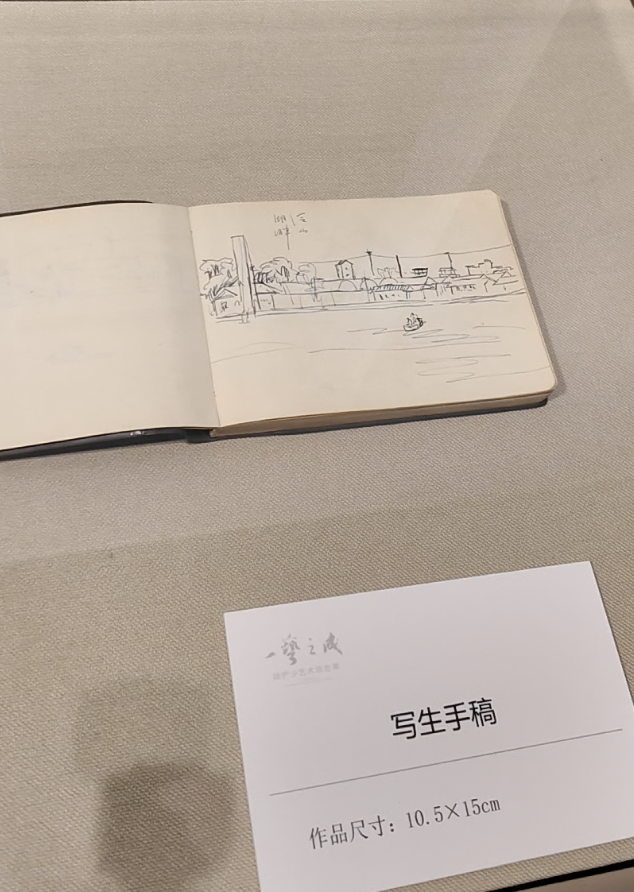
Sketchbook
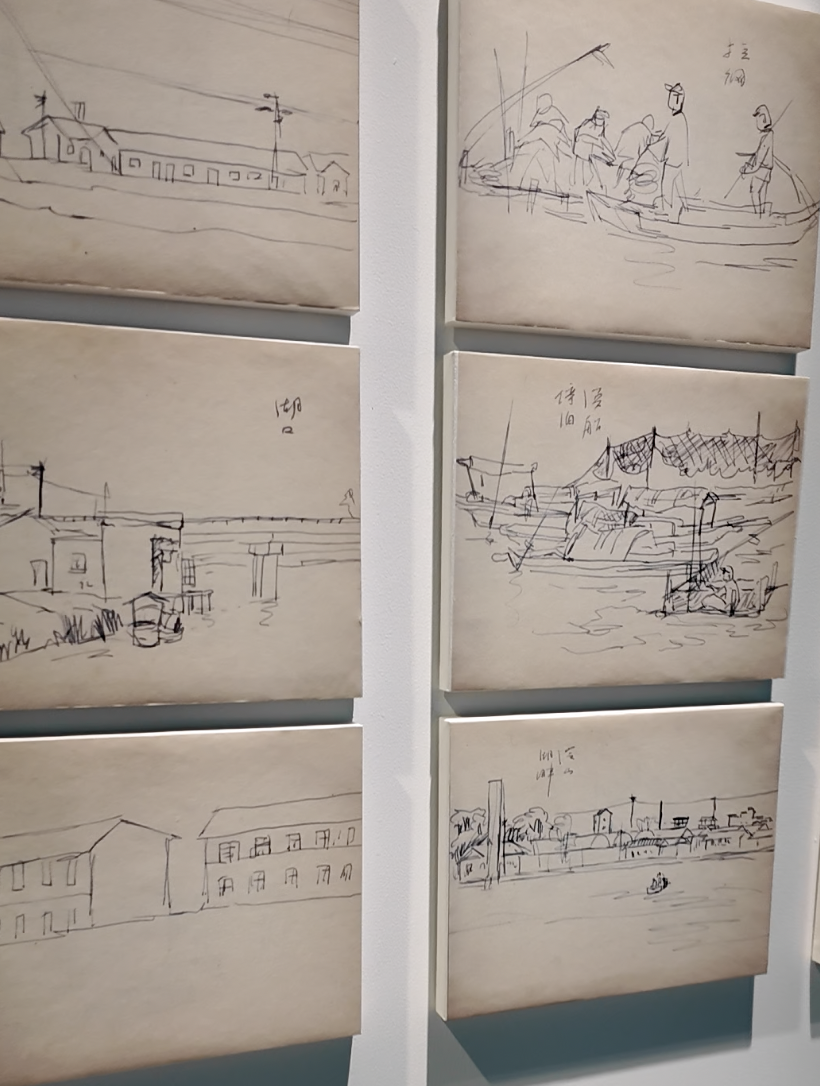
A display board showing the manuscript after enlargement
Jiading has long produced numerous literati and painters, including Li Liufang, Cheng Jiasui, Wu Li, and Song Wenzhi, who have collectively built an 800-year tradition of calligraphy and painting. They revered tradition, valued brushwork, focused on reality, and were committed to innovation—Lu Yanshao exemplified this cultural tradition. As Lu Yanshao remarked in his later years, "I long to realize that I am still young, yet I must create something new, something different from the old, and muster my remaining courage for a final push."
According to Gu Jing'an, dean of the Lu Yanshao Art Academy, this exhibition also has a special "second classroom".
As satellite exhibitions of the annual exhibition, three student-curated exhibitions, "Mountains and Rivers," "Landscape Impressions," and "Poetry and Gorges Shared Souls," were open to the public at Hexiang Art Gallery in Juyuan New District, Jiading Bailian Shopping Center, and the Jiading Town Sub-district Party and Mass Service Center. Thirty-seven students from Jiading No. 1 Middle School, Jiaotong University Affiliated Jiading Branch School, and Shanghai Normal University Jiading High School studied and curated the exhibitions independently under the guidance of teachers in Chinese, geography, and art. The Lu Yanshao Art Academy provided high-definition replicas of the works, allowing the students to experience the lives of ordinary "art museum residents" and providing a valuable platform for practical labor education during the summer.
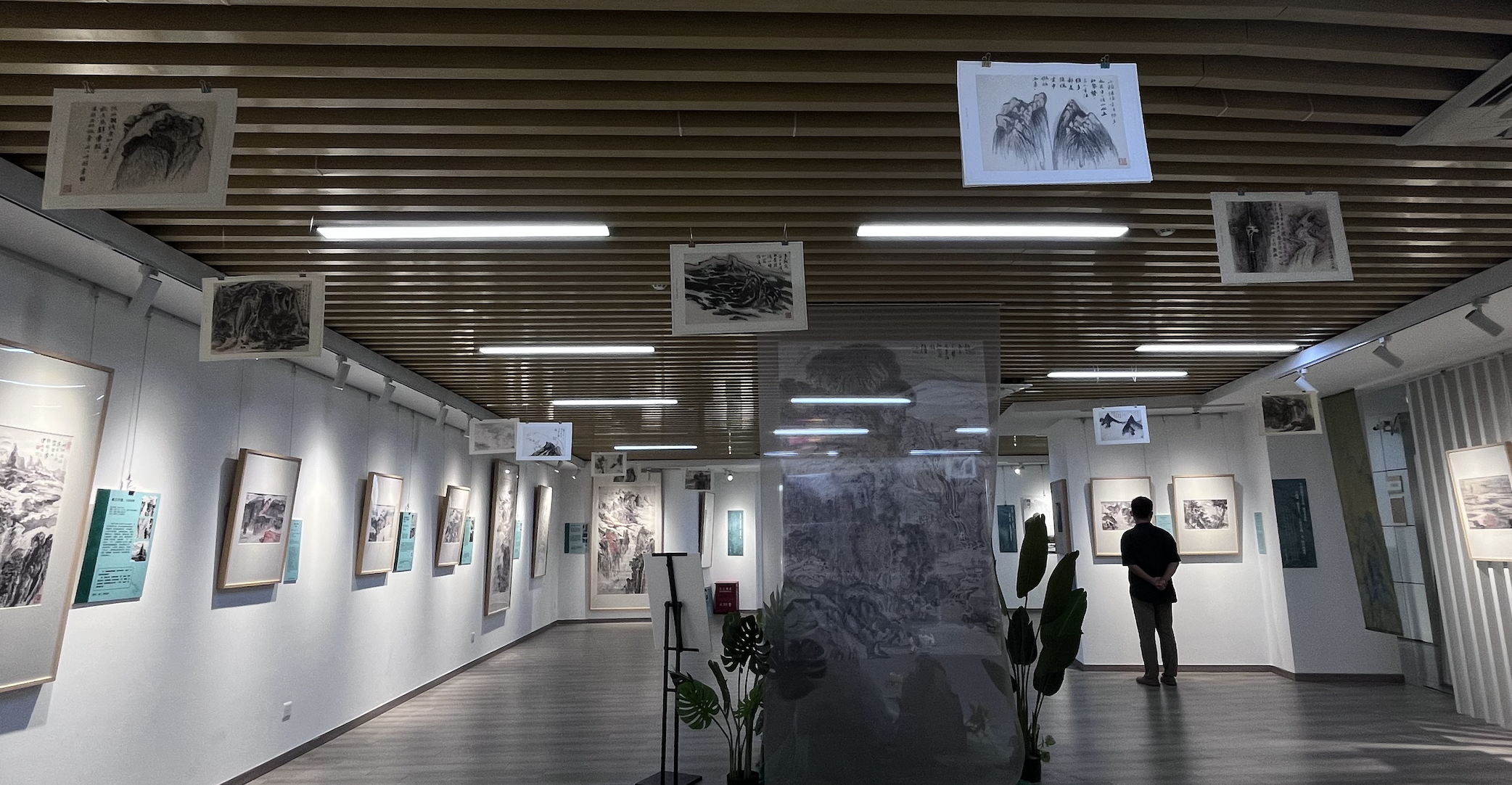
"Poetry Gorge and Soul: An Interdisciplinary Analysis of Lu Yanshao's Art" curated by students from the Jiading Branch of the Affiliated High School of Shanghai Jiao Tong University
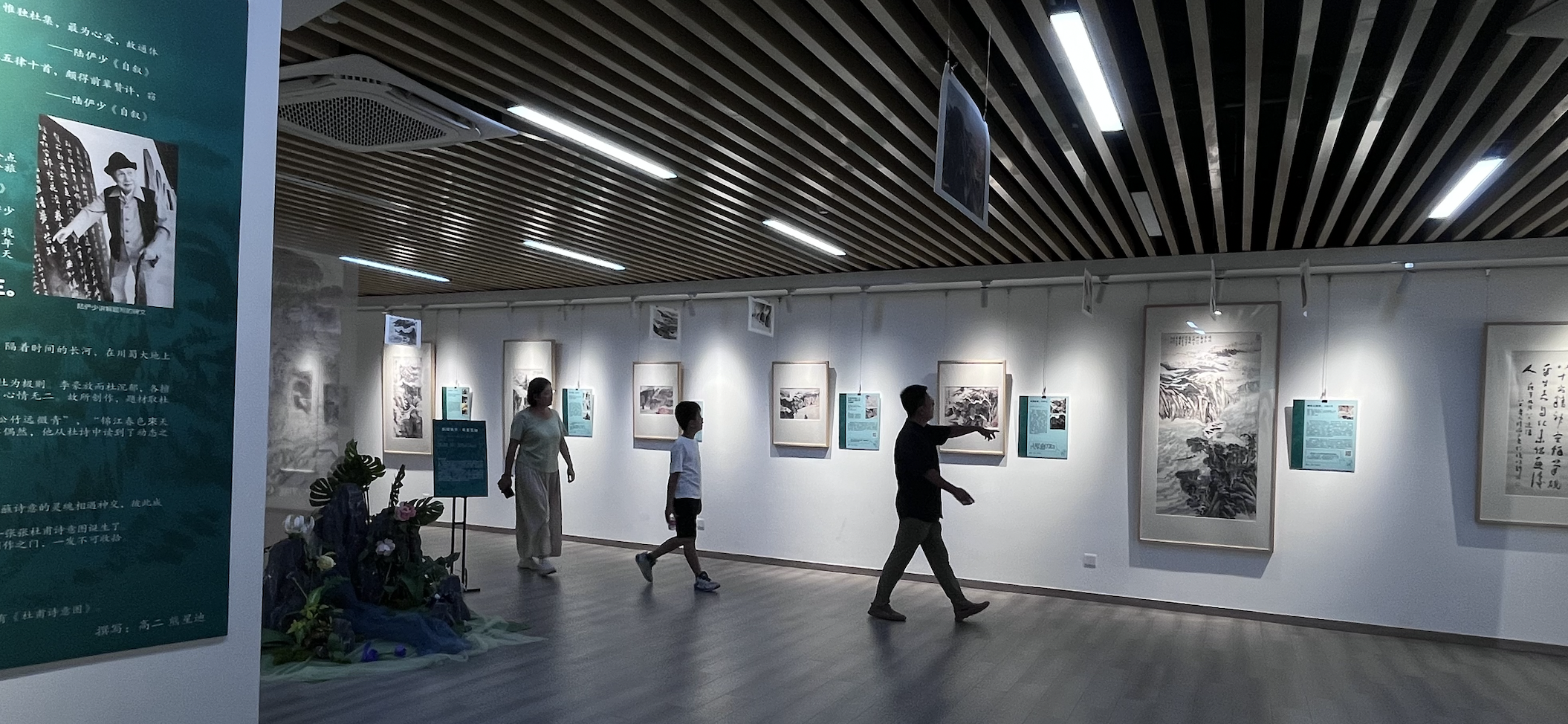
"Poetry Gorge: A Transdisciplinary Analysis of Lu Yanshao's Art" runs until September 29th
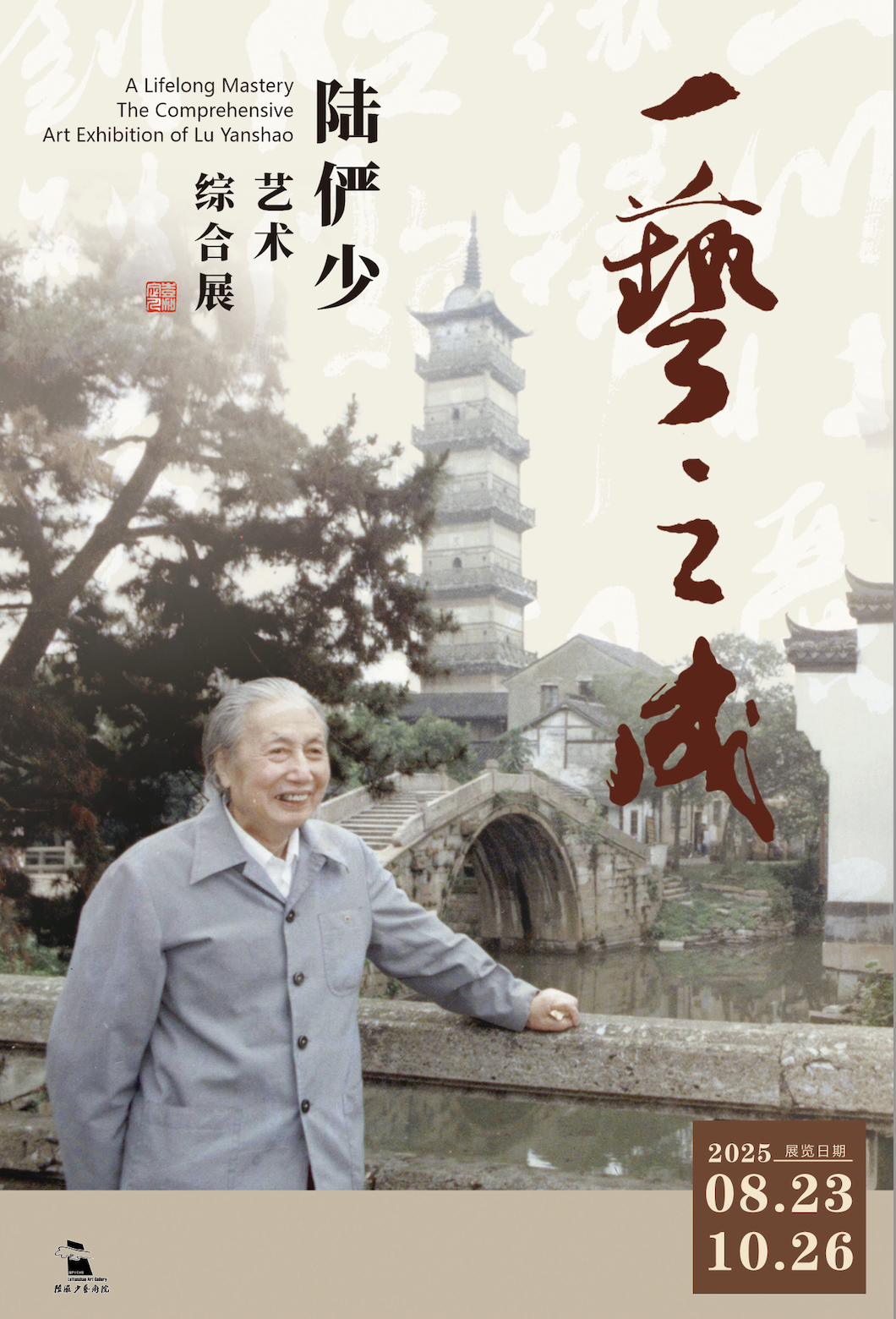
It is reported that the exhibition at Lu Yanshao Art Academy will end on October 26.
- rcjnxpkEo09/01/2025
- EfzPAghpnrrK09/01/2025
- GLAHxfqNvy09/01/2025
- jacJQvVsnThfwd09/01/2025
- RbrSqPWKvhz08/31/2025
- cnBmYFXUgSUTCq08/31/2025
- nJgOfWYfcCwtyjU08/31/2025
- YjQNkAHEI08/31/2025
- UlRARkJYNQeLj08/30/2025
- uiMjtMsLG08/30/2025
- rKiLWUPPkbSmRC08/30/2025
- QVmvtpRRHlb08/30/2025